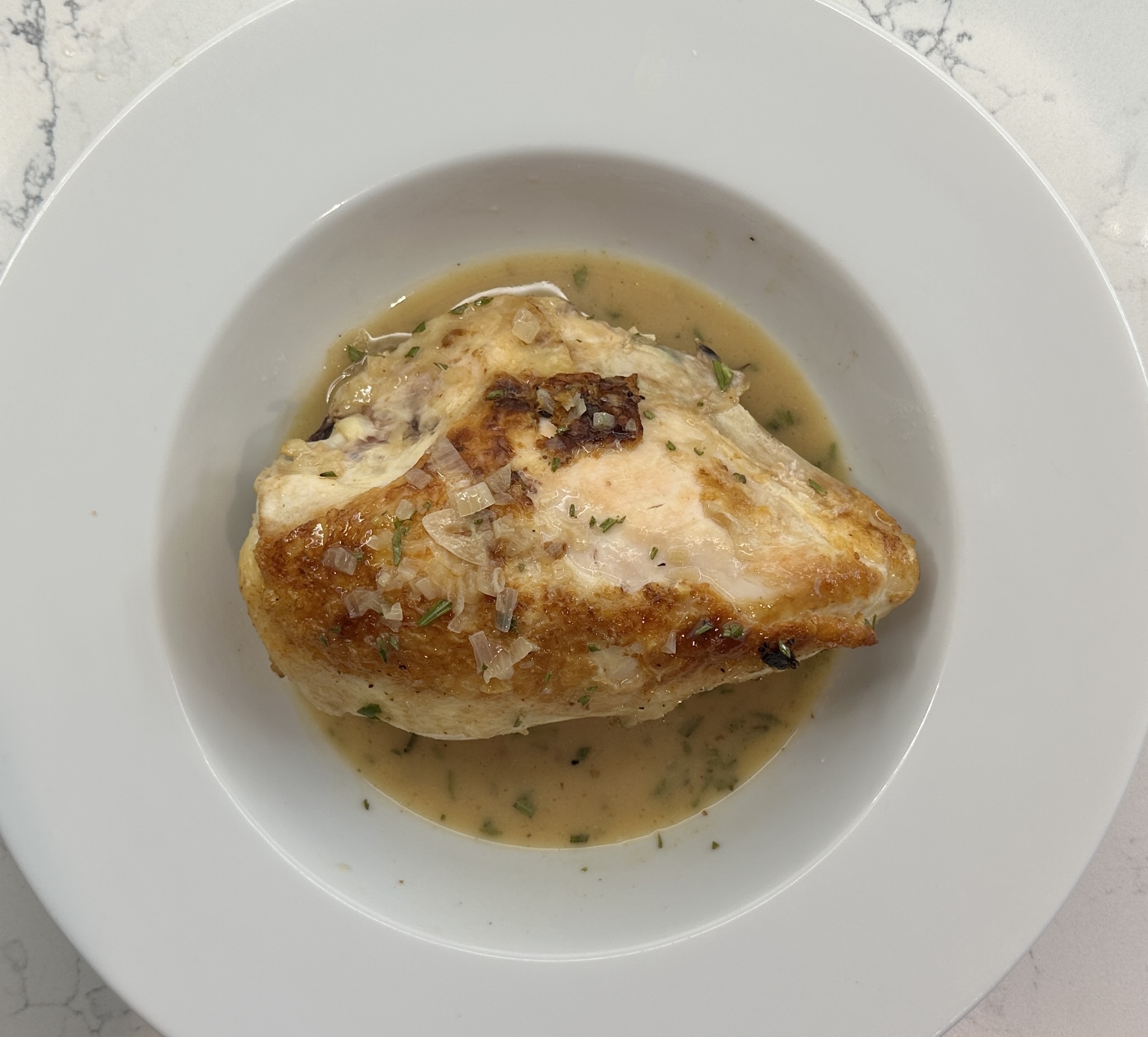
Worldwide Food Tour – France
A Classic of French Country Cooking
Poulet au Vinaigre (Chicken with Vinegar) is a rustic yet refined French dish, where chicken is braised in a tangy vinegar sauce that is balanced with shallots, garlic, tomatoes, and butter. Originally from the Lyonnais region, this dish exemplifies French country cooking, using simple, high-quality ingredients to create a dish that is both bold in flavor and elegantly balanced.
This dish is not as well-known as coq au vin or boeuf bourguignon, but it is a hidden gem in traditional French cuisine, perfect for those who love savory dishes with a touch of acidity and depth.
The History: A Classic of Lyonnais Cuisine
Poulet au Vinaigre is most closely associated with the Lyon region, often called the gastronomic heart of France. Traditionally, vinegar was used as a preservative and flavor enhancer, allowing chicken to be cooked slowly in a sauce that became deeply rich and complex over time.
This dish gained wider recognition thanks to Paul Bocuse, the legendary Lyonnais chef who championed traditional French bistro dishes while refining their techniques. Today, Poulet au Vinaigre remains a classic dish in many French homes and bistros, loved for its silky, glossy sauce and balanced flavors.
What is Poulet au Vinaigre?
At its core, Poulet au Vinaigre is a braised chicken dish, where chicken pieces are sautéed until golden brown, then simmered in a sauce of vinegar, shallots, and sometimes tomatoes or cream.
Essential Ingredients of Poulet au Vinaigre:
- Chicken (Poulet): Traditionally, a whole chicken cut into pieces, but thighs or drumsticks work well.
- Red or White Wine Vinegar: The key to the dish’s tangy, slightly sharp flavor.
- Shallots & Garlic: Adds depth and sweetness.
- Tomatoes (Optional): Some versions use chopped tomatoes for extra richness.
- Butter: Softens the vinegar’s acidity and gives the sauce a silky texture.
- Chicken Stock or White Wine: Helps deglaze the pan and build layers of flavor.
- Cream (Optional): Some modern recipes add cream for extra richness.
- Fresh Herbs (Tarragon or Thyme): For an aromatic finish.
The key to this dish is balancing the acidity of the vinegar with the richness of butter and chicken, creating a sauce that is velvety and full of character.
Tasting Notes: Tangy, Savory, and Buttery Smooth
A well-made Poulet au Vinaigre delivers a perfect contrast of flavors:
- The chicken is tender and juicy, infused with the vinegar’s subtle tang.
- The sauce is glossy and rich, with a deep savory backbone from shallots and stock.
- The vinegar provides a mild acidity, enhancing rather than overpowering the dish.
- Butter and wine round out the flavors, creating a luxurious finish.
This dish is comforting yet sophisticated, embodying the elegance of French bistro cooking.
How Poulet au Vinaigre is Served
Poulet au Vinaigre is traditionally served with simple, classic French sides that absorb the sauce beautifully.
Traditional Accompaniments:
- Crusty Baguette – Perfect for soaking up the flavorful sauce.
- Mashed Potatoes or Pommes Purée – Creamy potatoes balance the acidity of the dish.
- Rice or Buttered Noodles – Helps absorb the rich, velvety sauce.
- Steamed Haricots Verts (Green Beans) – A fresh, crisp contrast to the dish’s richness.
Some modern versions also serve it with roasted vegetables or simple sautéed mushrooms, adding depth to the meal.
Why Poulet au Vinaigre is a French Classic
✔ Bold, Balanced Flavors – Tangy vinegar, rich butter, and tender chicken create a beautifully complex dish.
✔ Simple Yet Elegant – A perfect example of French bistro cooking, using few ingredients to create deep flavors.
✔ Easy to Make at Home – One-pan cooking, perfect for both weeknights and special occasions.
✔ A Dish with History – Loved in Lyon and beyond, championed by French culinary legends.
✔ Versatile & Customizable – Can be made with or without tomatoes and cream, allowing for different interpretations.
Whether enjoyed in a cozy French bistro or prepared in your own kitchen, Poulet au Vinaigre is a true expression of French culinary tradition—bold yet refined, simple yet extraordinary.